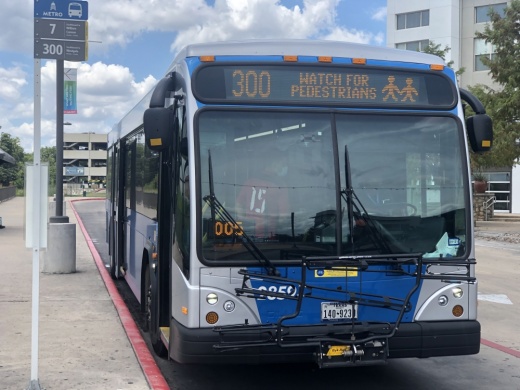Board members unanimously voted to approve a resolution adopting revisions to the CapMetro Fare Policy and another resolution adopting revisions to the CapMetro Fare Structure. As previously reported by Community Impact Newspaper, a plan was presented to the CapMetro board of directors back in March to rollout a new smart fare card and payment system.
Catherine Walker—executive vice president, chief financial and risk officer for CapMetro—said there is “a lot of work in front of us,” and there is still quite a bit to do before the smart fare card is ready for a systemwide launch, which is anticipated for January.
Walker noted, before any fares are increased or decreased, the Federal Transit Administration requires a Title VI equity analysis to identify any service cuts that could disproportionately affect people of color.
Walker said she was pleased to announce that, through its own analysis, no Title VI equity impacts were found. The systemwide change resulted in less than 1% disparate impact between minority and nonminority customers, and between low-income and non-low-income customers.
The new smart fare card, or Amp card, will be a physical card with smart chip technology to reload money directly to an account; there will also be a smartphone app for customers to use. Stored money is protected in a registered account in case a card is lost or stolen.
There are two proposals for the Amp card-based account system.
The first, fare capping, or pay as you go, reduces spending customers pay on daily or monthly fees. A customer will never pay more than the cost of a day pass in a calendar day. For local rides, the first ride is $1.25 and the second ride is also $1.25. In other words, the cap is set at $2.50, and all other local rides will be free to that customer for the day.
In a month, once a customer pays for 33 local rides they are at cap. For commuters, after 28 rides they “effectively purchase a monthly pass,” Walker said. Also, once someone reaches the cap on commuter rides, they can ride local and commuter rails for free for the rest of the month.
Fare capping is automatically available on every card, even if it is not registered.
The second proposal will be called “Equifare,” the new equitable fare structure for income-eligible participants. Customers may apply online or in transit stores for the program. With the local fare at $1.25, Equifare customers would only pay $1. This would be capped at $2 for the day. In addition, the monthly pass for the local bus is $41.25; Equifare customers would only pay $33. Reduced fares required by the FTA for Medicare recipients and customers with disabilities will remain. Children under age 18 will still ride free.
A rider is eligible if the household income is less than 200% of the federal poverty level or if they show proof of enrollment in special financial assistance programs, such as Medicaid, the Supplemental Nutrition Assistance Program or the Children's Health Insurance Program.
In response to the idea of both free or discounted transit fares, Board Member Wade Cooper said the proposal “is going to have profound impacts on our ability to serve the community in ways that meet people where they are. This will let us better move people around to education, opportunities and health care.”
He did caution, however, about the possibility of bankruptcy, which CapMetro almost experienced in 2008 and 2009.
“We need to be mindful of our fiscal stewardship,” he said. “We still aspire to have 20% of revenue from passenger fares; I don’t think we’ve ever even reached 10%. We have to be realistic about what we can and can’t do.”
Board Vice Chair Ann Kitchen said having to load money onto a card “appears to make it easier,” but is still an extra step. She said she would be curious to see if some customers are unable to take advantage of that.
The project is still in Phase 1, with CapMetro collecting feedback, educating the community about the proposals and forming partnerships with local community-based organizations. The current hope is to start Phase 2 in August.





